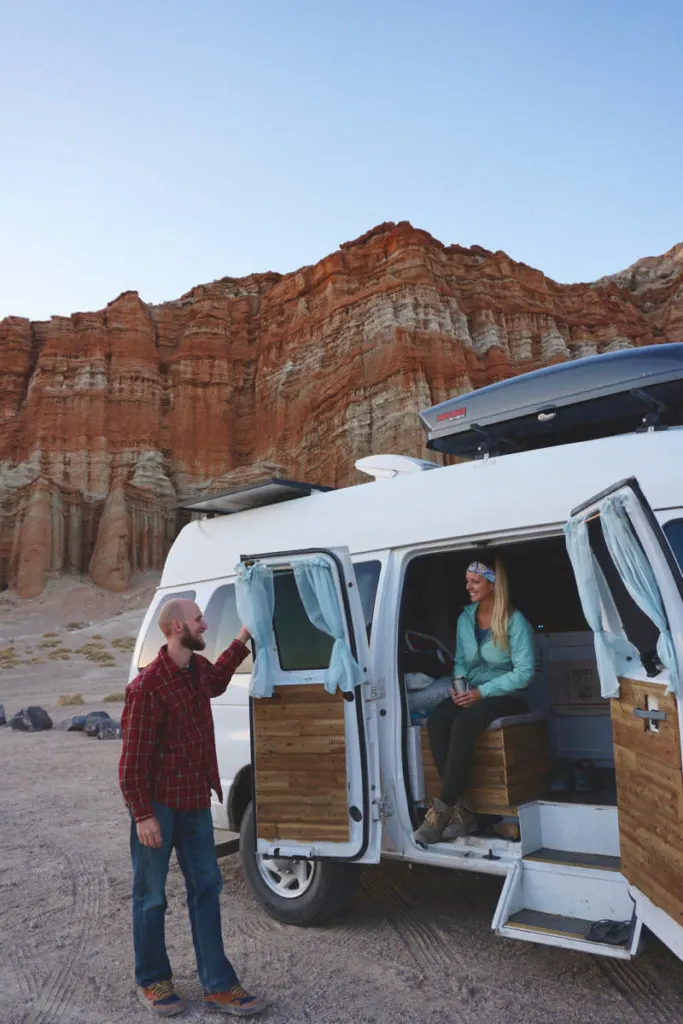
Are you curious what are the best vans to live in? Well, vanlife is certainly not a one-size-fits-all community.
Some folks are looking for just a basic weekend van with a bed, simple kitchenette, and some storage. While others are aiming for a luxury home on wheels, complete with solar panels, shower, air conditioning, induction cooktop, and more. And all wonderful campervan creations in between.
There are a lot of factors to consider like roof height, interior space, new vs used, all-wheel-drive, fuel efficiency, etc.
And of course, budget! Finding a van that fits your needs and your budget is where the real challenge begins.
But this post will help you decide which vans are the best to live in based on your specific goals.
Note: This article covers van availability specific to North America.
Euro-Style Vans
The first category includes the most modern and expensive vans, sometimes referred to as Euro-Style. They are defined by a boxy shape and were the first vans in North America with a high roof option. The primary benefit of which is being tall enough to stand inside. And advancements have led to decent gas mileage in the high teens to low twenties.
This market segment is currently dominated by the “Big Three”, Mercedes-Benz Sprinter, Ford Transit, and RAM Promaster. These vans with standing room and loads of modern tech and safety features are a top choice of best vans to live in.
The extended body, high roof models give tons of extra space that’s ideal for two people living full time, or families with children or pets.
And the cargo vans are an ideal blank slate for conversions, though some passenger and crew versions are available too.
There are some meaningful differences and plenty of nit-picky distinctions between them, but ultimately, they are all great platforms for a van conversion.
Mercedes-Benz Sprinter
The Mercedes Sprinter Van is the most high-end luxury van available. But it’s also the most expensive, leading to the high price of a Sprinter Van Conversion.
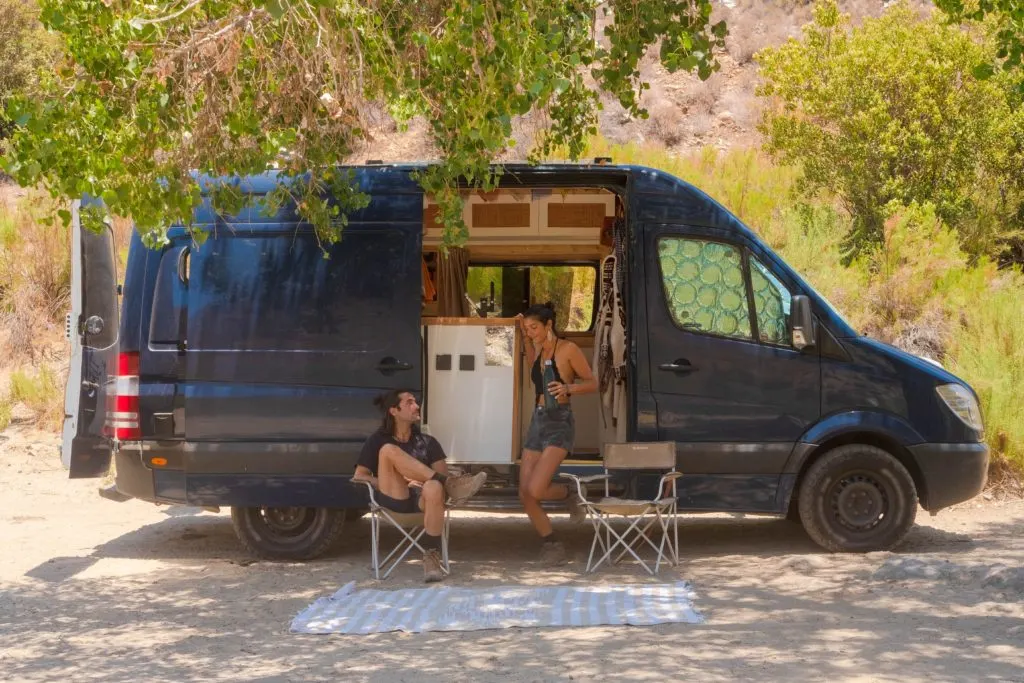
It’s a boxy full-size van that comes in tons of different sizes and configurations.
The Mercedes Sprinter has the most luxurious cab of all vans.
One of the most notable benefits is the available four-wheel-drive and high clearance (otherwise RWD). For off-roading, it’s the best option of the “big 3”. However, beginning in 2023, Mercedes switched from true 4×4 to all-wheel-drive (AWD), a move that will certainly upset off-road enthusiasts. (What’s the difference between AWD and 4×4?)
The Mercedes Sprinter is expensive to maintain in North America, since parts are less common and mechanical issues often require dealership expertise.
Mercedes-Benz Sprinters are also available in diesel versions, which historically results in better gas mileage, longer engine life, and thus, better resale value.
Ford Transit
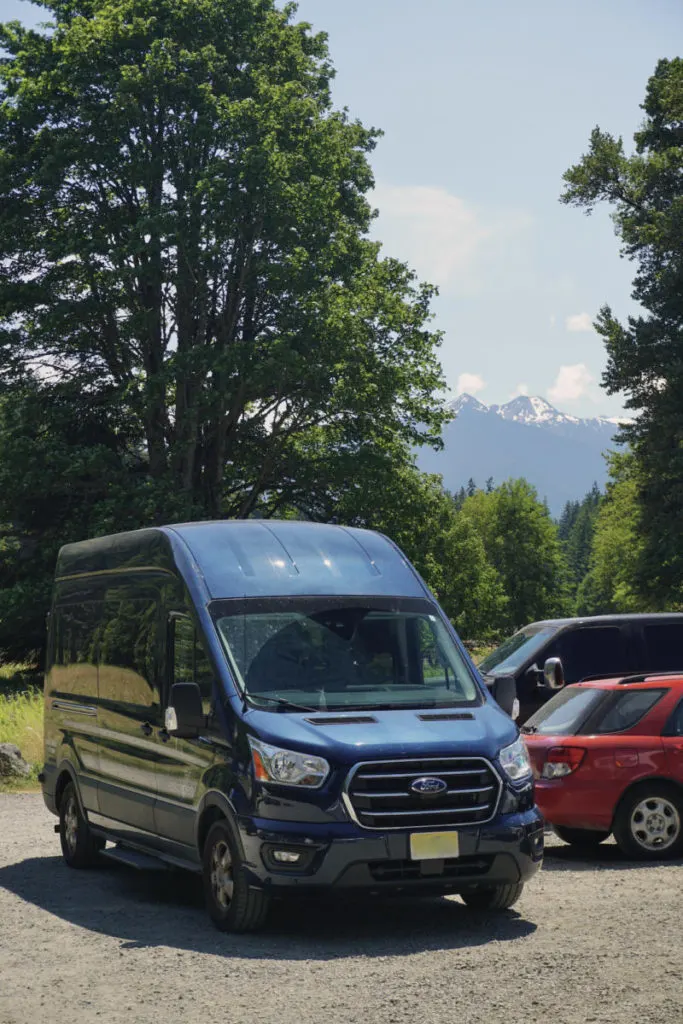
The Ford Transit Van is another one of the most popular vans to live in. It’s Ford Motor Company’s boxy euro-style van that debuted in 2015 in North America. It is available with several different roof heights and lengths.
It offers a vehicle size similar to the Sprinter with a little bit of price savings, for purchase price and also maintenance.
Beginning in 2020, the Ford Transit became available with AWD models (otherwise RWD). This added the Ford Transit to a relatively small list of vans with all-wheel-drive or four-wheel-drive.
Ford Transit vans are only available with gas engines in North America.
RAM Promaster
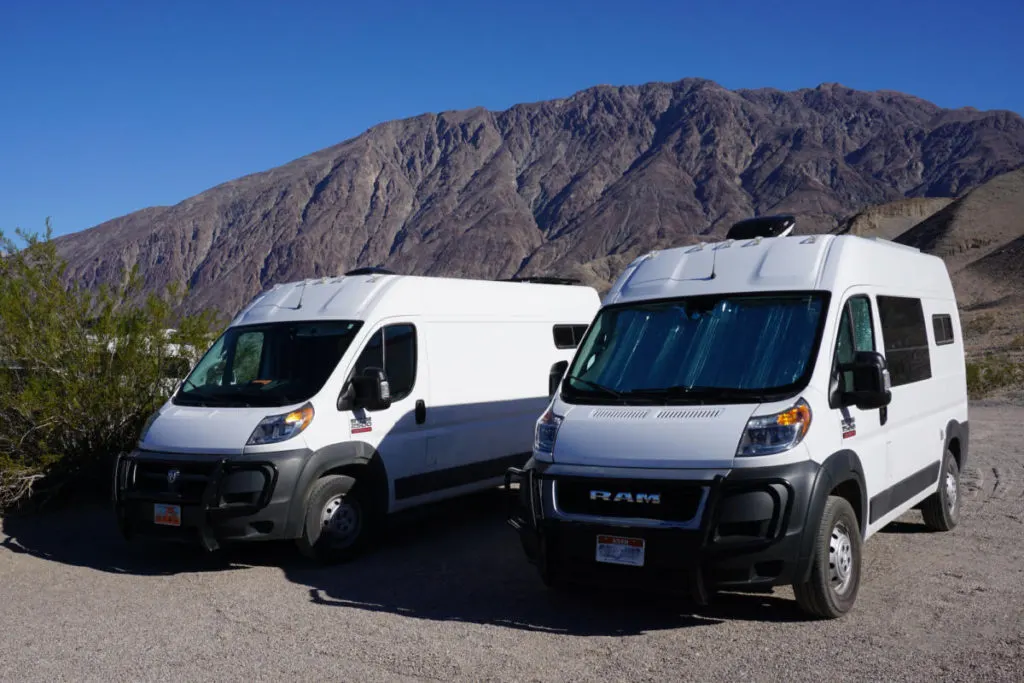
The RAM Promaster, introduced in 2014, is a North American version of the Fiat Ducato Van (available in Europe since the 90’s). It offers the cheapest entry price of the “big 3” euro-style vans.
And similar to the Ford Transit, parts and maintenance are relatively cheap in North America. However longevity is slightly more suspect that the other two.
Perhaps the biggest advantage of the RAM Promaster is its boxy shape. It’s not a perfect box, but noticeably less rounded than Sprinter or Transit. This makes converting the van slightly easier, with less curvature to account for.
And lastly, the RAM Promaster has the widest interior width, making sleeping width-wise more feasible. Which in turn, saves more space for the living area of your conversion.
One potential drawback of the RAM Promaster is that they are only available with front-wheel drive. A Promaster may be less capable of climbing steep pitches with low traction surfaces (i.e. snowy mountain roads or dirt backcountry roads).
RAM Promaster was available with diesel engines from 2014-2019, but since 2020 they have only been made with gas engines.
Nissan NV

The Nissan NV is a bit of a unique van option (discontinued in 2021). It feels like somewhat of a hybrid between euro-style van and classic American work van. With its available boxy high roof, paired with a truck-like construction
It borrows the platform used for Nissan Titan, and has a long nose, which makes for a more comfortable cab but takes away from the overall cargo space. So there is a shorter living space as a ratio of overall vehicle length.
Perhaps the most notable feature is the best in class towing capacity of the Nissan NV.
They are only available in RWD, though I commonly see them used as a platform for aftermarket 4×4 conversions.
The Nissan NV didn’t capture enough of the market to remain viable, but despite that, it’s still one of the best vans to live in.
Mercedes Metris Van
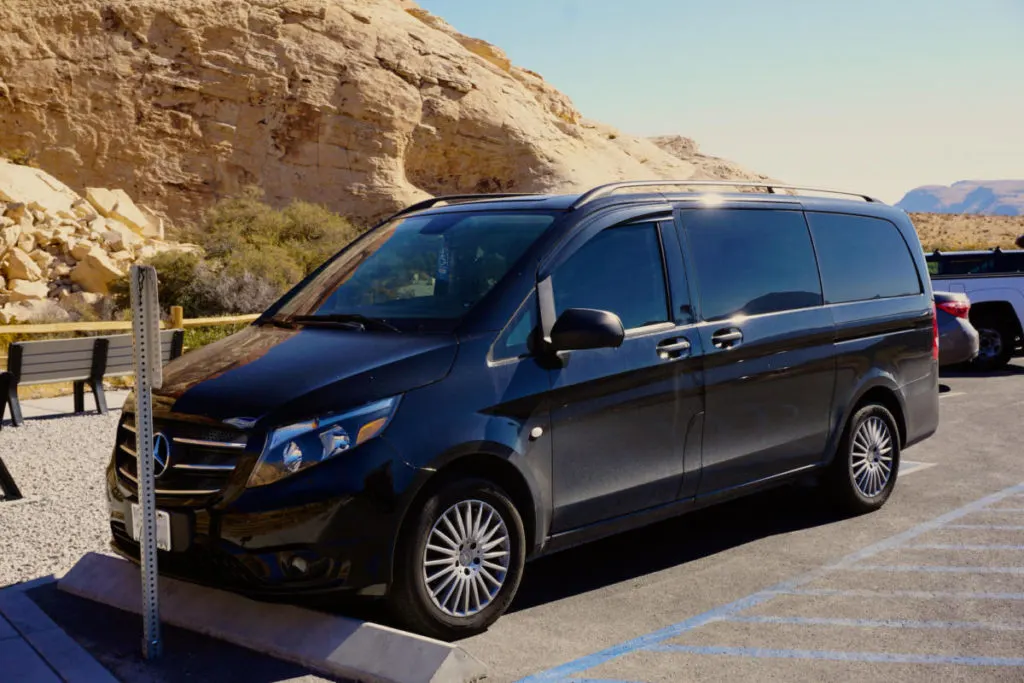
Another unique van that doesn’t fit neatly in a specific category is the Mercedes Metris (Mercedes Vito in Europe). It’s smaller than all the full-size vans but bigger than the rest of the minivans and city vans. And with a powerful engine and a RWD drivetrain, the Mercedes-Benz Metris is definitely a workhorse for its size.
For some, the Metris might be the perfect goldilocks van, with a balance of features that’s just right.
It is available in cargo and passenger versions.
The Mercedes Metris is the most refined “minivan” with a comfortable tech-loaded interior and snappy handling.
But like its big brother the Mercedes Sprinter, the Metris is priced more like a luxury vehicle. And parts and maintenance are more expensive, typically requiring visits to the MB dealership.
In the United States and Canada, the Mercedes Metris was produced from 2015-2023.
Classic American Work Vans
The classic American work vans category includes Chevy Express, GMC Savana, Ford E-series, and Dodge Ram Van.
This category of older, mostly discontinued, vans dominated the full-size van market in North America for decades. As such, there are tons of cheaper used models available that offer a budget-friendly entry into vanlife.
They are cheap and easy to maintain, with abundant parts and qualified mechanics. With designs that change very little over decades, it is easy to find common and recycled parts
The main drawbacks are the low roofs and a very rounded body. The round walls are a bit of a challenge for DIY conversions, and the low roof doesn’t allow for standing up inside.
However, there are a number of common aftermarket hightop conversions (like our campervan Delphie). This includes conversion vans, shuttles, handicap vans, pop top campervans, ambulances, and more. Here’s why we think fiberglass hightop vans are a great value!
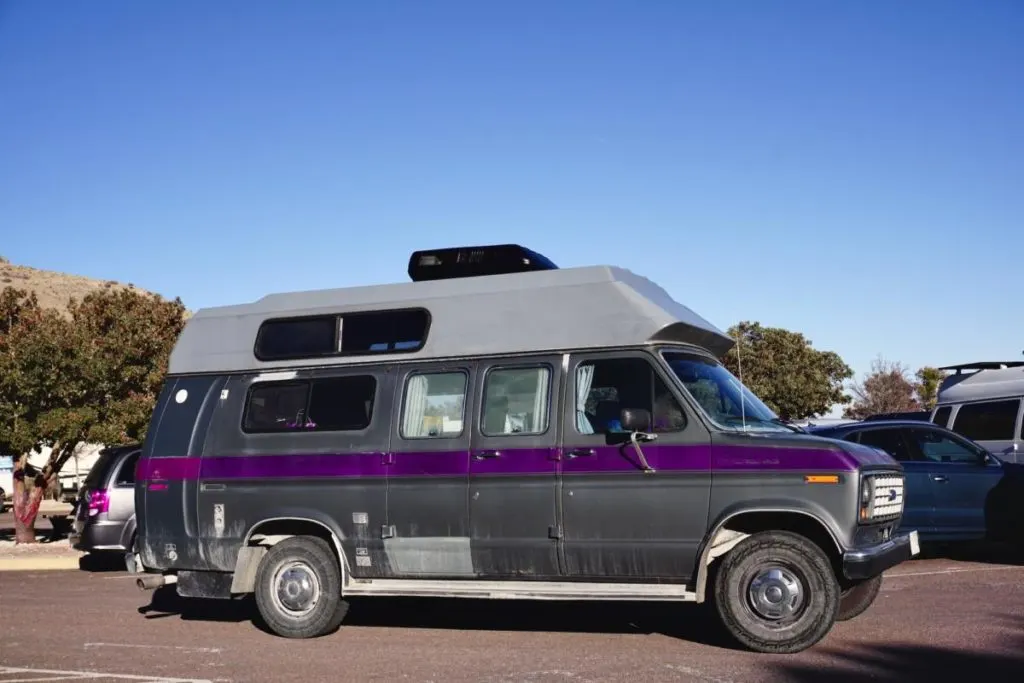
And lastly, classic American work vans are not known for good gas mileage, typically hovering in the mid teens.
But their abundance and cheaper price make them the most budget-friendly full-size van option for aspiring van lifers.
Chevy Express and GMC Savana
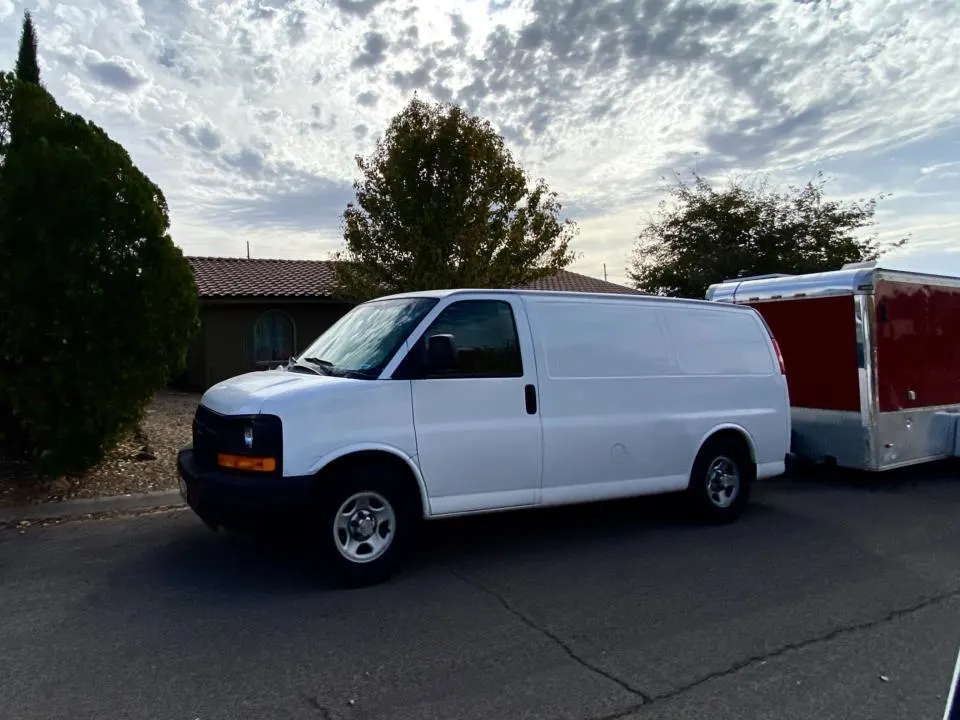
The Chevrolet Express and GMC Savana are General Motors’ full-size van series that began in 1996. They are the last of the classic American work vans still in production, making them the longest active in-production vans in North America.
What you can say about them is they are dependable workhorses that are cheap to buy and maintain. And from 2003-2015 the Chevy Express 1500 and Savana 1500 were the only full-size vans with available AWD in the US.
However, these vans only come with a low roof option, so standing height conversions require aftermarket mods like a fiberglass hightop or pop top.
They don’t get good gas mileage and they lack many of the tech and safety features that come standard on Transit, Promaster, and Sprinter.
While all other auto manufacturers have pivoted to a euro-style van design, the Express and Savana represent the last of the classic American work vans.
Ultimately, a used Chevy Express or GMC Savana still represents a good budget-friendly van for low-roof conversions.
But since discontinuing AWD models and the introduction of euro-style vans, I don’t think anyone is clamoring to buy a new Chevy Express for a van conversion.
I wrote another post about the differences between specific Chevy Express vans.
Ford E-Series (Econoline)
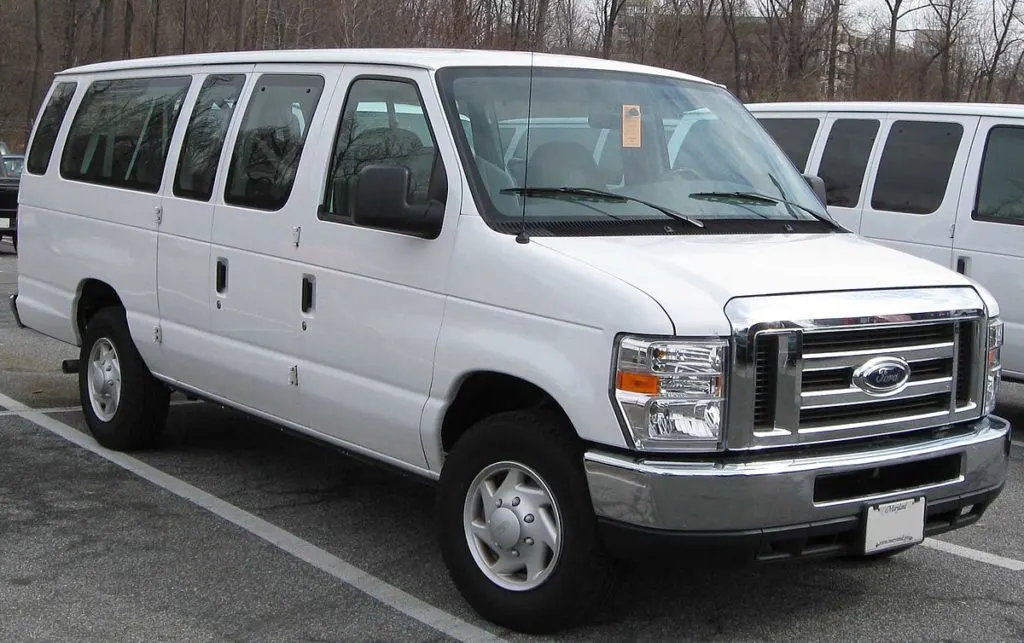
The Ford E-Series (formerly Ford Econoline) was Ford’s previous full-size van offering until it was replaced by the Ford Transit. In production from 1960-2015, Ford E-Series was the longest-produced van lineup in North America.
They are known for being dependable and affordable vehicles.
The Ford Econoline was only ever available with RWD (Rear-wheel-drive). However, in my experience, they are the most common vehicle to find aftermarket 4×4 conversions, like those done by Quigley in Pennsylvania.
The Ford E-series vans are only available in low-roof models, so standing height conversions are not possible without an aftermarket hightop.
Probably the most famous version of this is the well-known Sportsmobile Classic 4×4 Conversion Van.
Ford E-series MPG ratings are typically in the mid-teens, thus not on par with the more modern euro-style vans.
I wrote another post about the differences between specific Ford E-Series vans.
Dodge Ram Van
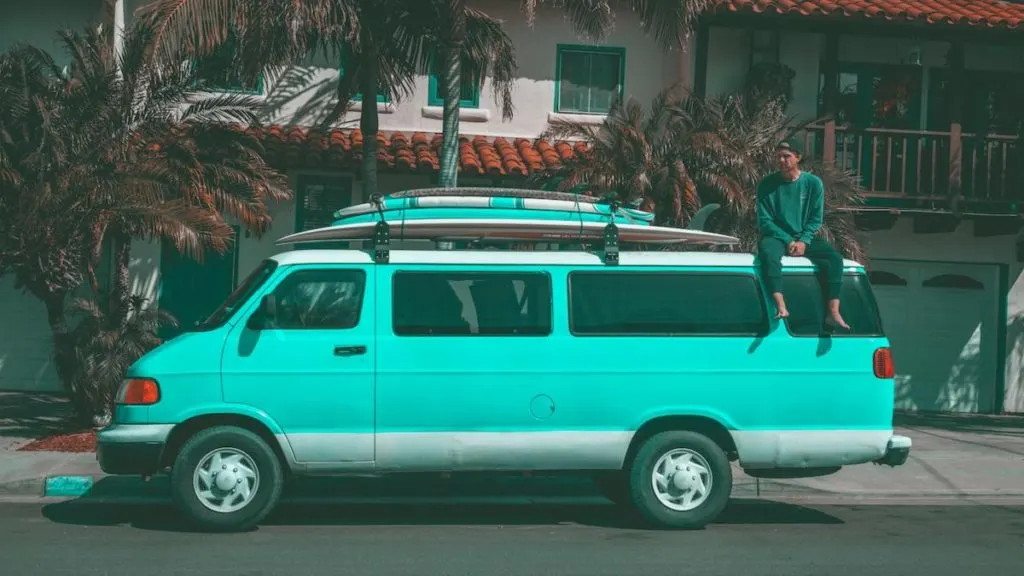
Yet another one of the old classic work vans, the Dodge Ram Van was produced from 1971-2003. The biggest difference between Dodge Ram Van and the other classic American work vans is that it’s a unibody design. This means the chassis and body are constructed as one piece, rather than the ‘body on frame’ style employed by other vans.
The advantages of unibody are weight reduction, lower cargo floor, lower center of gravity for handling, and better crash safety.
But the disadvantages of Unibody designs are lower ground clearance, less hauling/towing capacity, noisier ride, less torsional rigidity for off-roading, and more expensive crash repairs.
However, all these pros and cons are likely more relevant when comparing to other vans of the same era. Most modern vans now employ a hybrid of the two types. They are technically Unibody designs, but with an integrated frame for rigidity and strength.
City Vans
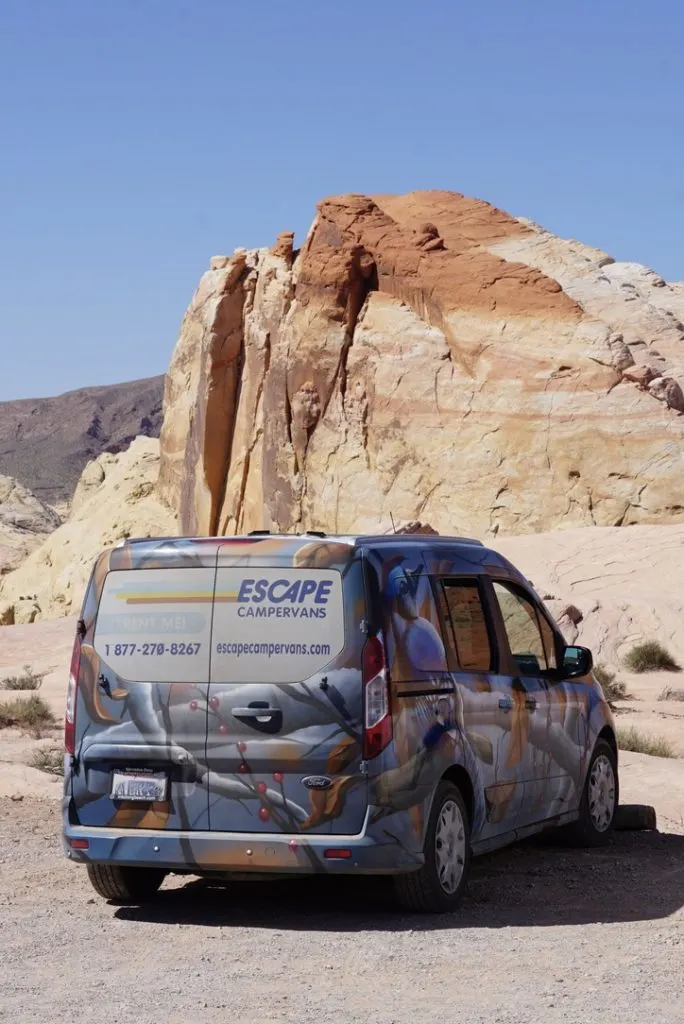
Another popular category of vans to live in are the ‘city vans’. A few popular vans in this category are the Ford Transit Connect, RAM Promaster City, Nissan NV200, and Chevy City Express. These small city-oriented panel vans were designed as light-duty work vans with excellent gas mileage.
Their smaller size makes them easier to drive and park, handling much more like a car than a full-size van. And their sedan-based design makes them cheaper to own and maintain. They are great for building campervans that also function as a daily driver.
Their biggest drawbacks are low roofs, lower payload, low ground clearance, and shorter lifespan.
Conversions built with city vans typically use creative designs to maximize the small space. The micro-campers can employ convertible beds, slide-out kitchens, and other flexible uses of the limited space.
Due to the smaller size, city vans are more common amongst solo vanlifers.
These vans were popular during the 2010s to 2020s, but slowly all became discontinued. The Ford Transit Connect was the final van in production in this category, ending in 2023.
Chevrolet Astro (“Astrovan”) & GMC Safari
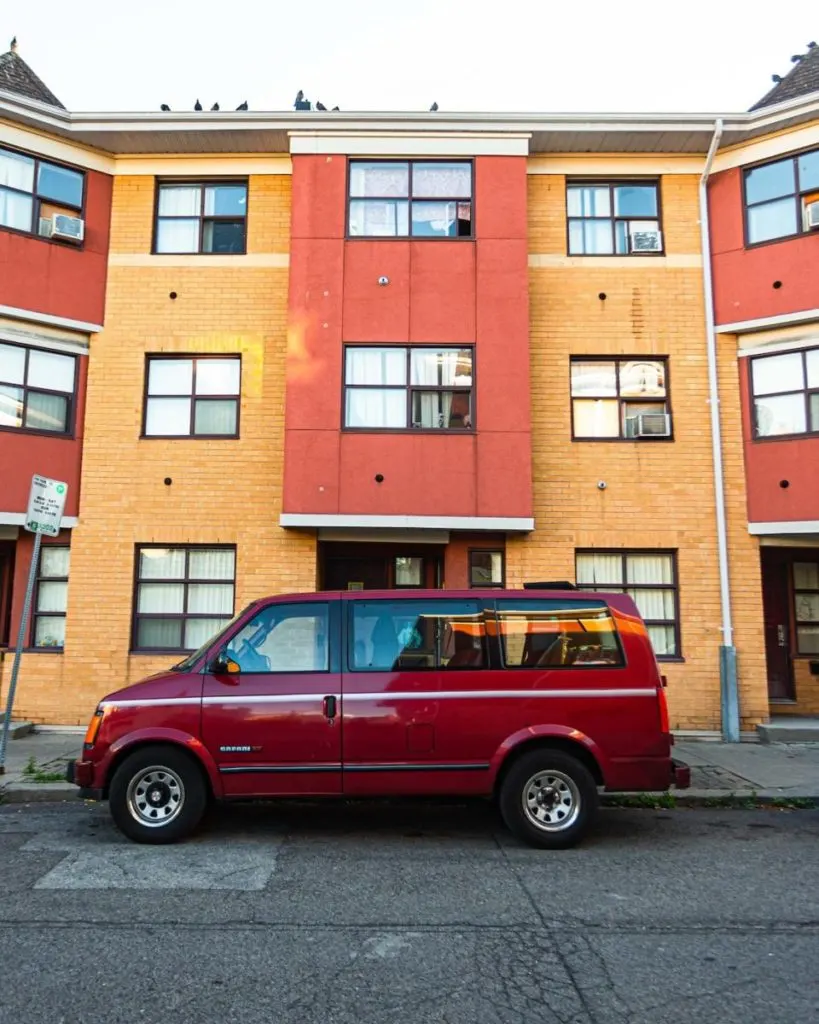
The Chevy Astro (and mechanically identical rebadged GMC Safari) are another popular choice of vans to live in. The Astrovan and Safari were boxy minivans produced from 1985-2005.
These small but capable older vans carry their own cult-like following. Especially the AWD versions that became available beginning in 1990. As a versatile and reasonably dependable van, they remain one of the best older vans to live in.
VW Vanagon (Volkswagen Type 2 – T3)
Ever since the VW Bus popularized vanlife in the 60s and 70s, Volkwagen has had a penchant for campervans. Their most popular campervan oriented vehicle is the VW Vanagon, with its highly modular furniture.
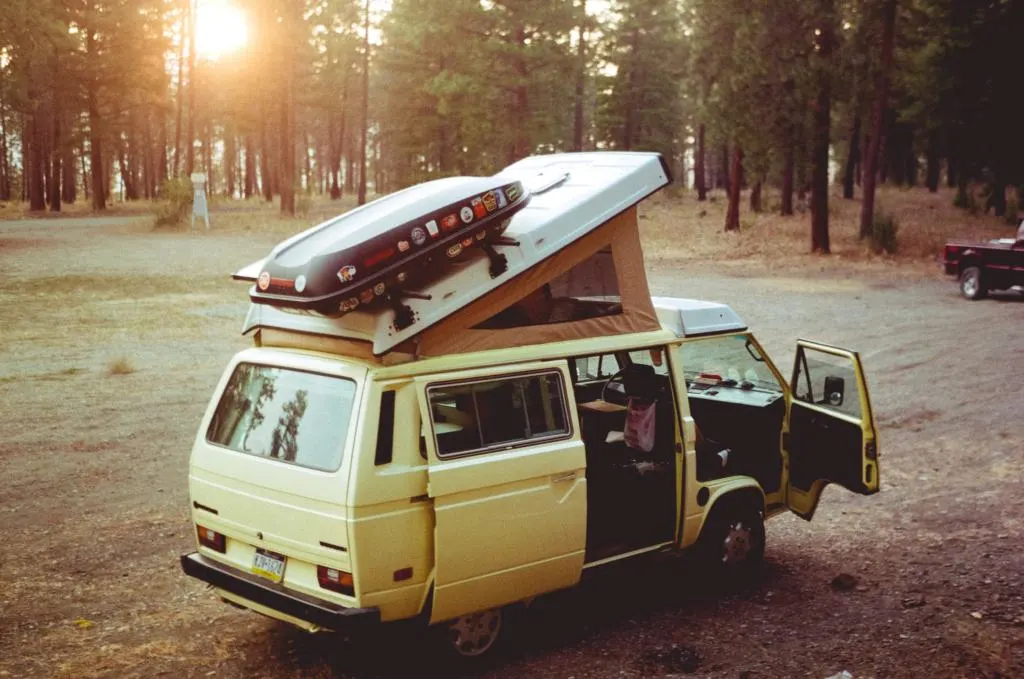
And none more popular than the professionally converted Westfalia Pop Top Campervan. The most luxurious version of these professional campervan conversions included a propane fridge, 2-burner stove, sink with water storage, and sleeping room for 4 adults.
Vanagons were produced from 1971-1991. And despite their age, these classic vans are still a popular van choice for VW enthusiasts. This trapezoidal-shaped van with cab-over design creates ground clearance and angles decently suited for off-road use.
However, they are notoriously underpowered. So Vanagon conversions should be very mindful of weight.
Additionally a four-wheel drive version, called Syncro, was produced from 1984-1991.
Experienced tinkerers are willing to put in the time, sweat, and money to keep these classic vans on the road.
Minivans
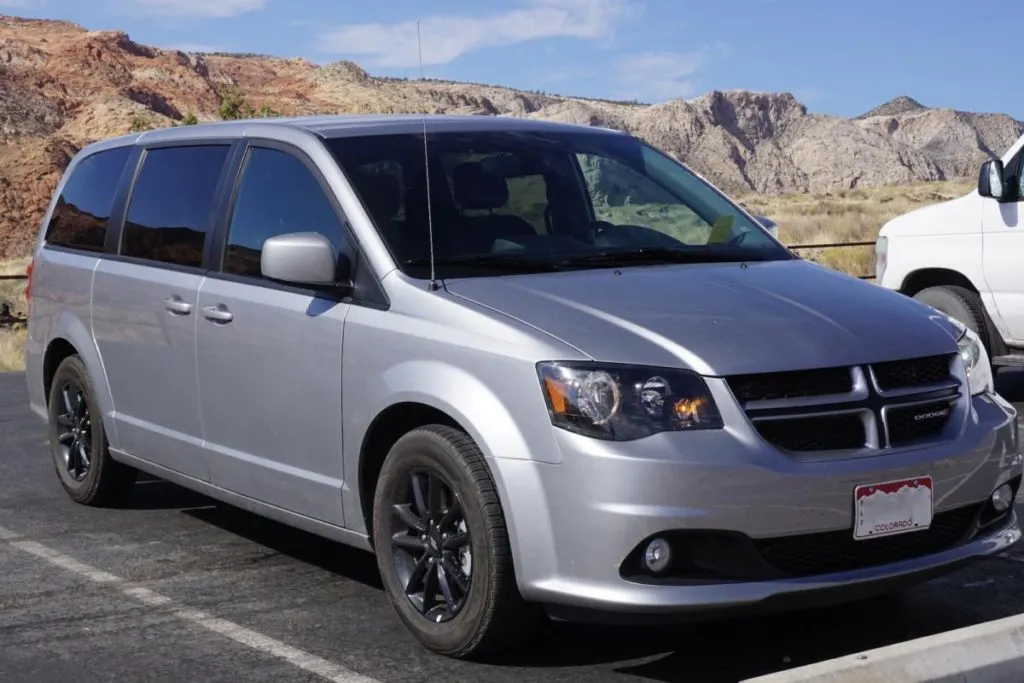
The last category of popular vans to live in are family-oriented passenger minivans. They are not available in cargo versions, so expect to have lots of seats and windows on all sides. Minivans are a good option for a campervan conversion that also doubles as a people-mover. You can utilize folding seats to somewhat quickly transform back and forth from family car to weekend camping rig.
The ones that are actively in production include Toyota Sienna, Honda Odyssey, Chrysler Pacifica, Dodge Grand Caravan, and Kia Carnival.
But there are loads of other discontinued or renamed minivans from this market segment (Nissan Quest, Ford Windstar, Chrysler Town & Country, Kia Sedona, among others).
Older minivans can be scooped up for a decent bargain, but new ones are around $40,000. However, unless you need the utility of the passenger seats, your money could be better spent on another type of van.
The seat configuration typically allows for folding or removable seats to achieve maximum cargo space. And the flat floor makes a good platform for micro-camper conversions.
However, a Minivan’s round body shape and abundance of windows make them a challenge to convert the same way as a cargo van (with insulation, wood paneling, etc.)
What they lack in total cargo volume and off-road ability, they make up for in MPG and driveability.
Other Great Vehicles To Live In
Some of the other best vehicles to live in might not be vans per se, but they are worth consideration.
Box Trucks
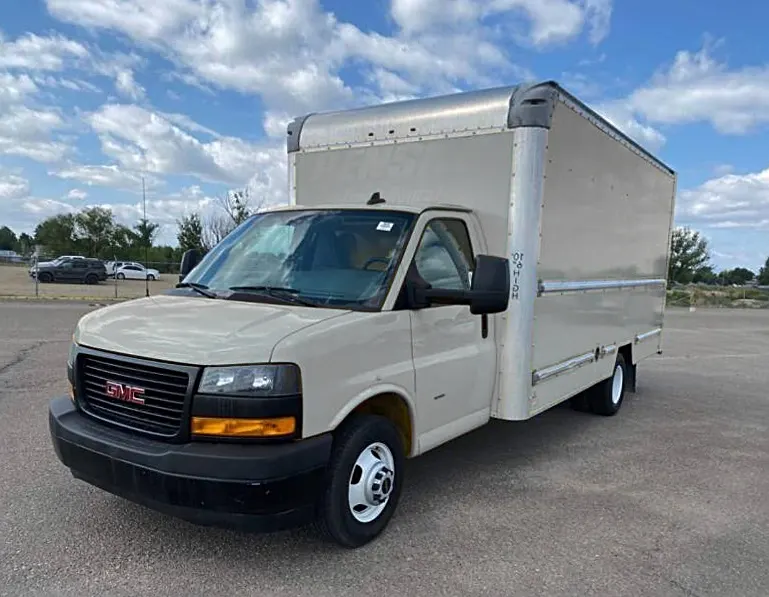
Box Trucks are the ultimate blank slate that is easy to convert. Their perfectly square walls make camper conversion very simple, you can even use household furniture. They are not the most pretty to look at, but their boring-ness can be a perk for stealth camping.
Shuttles
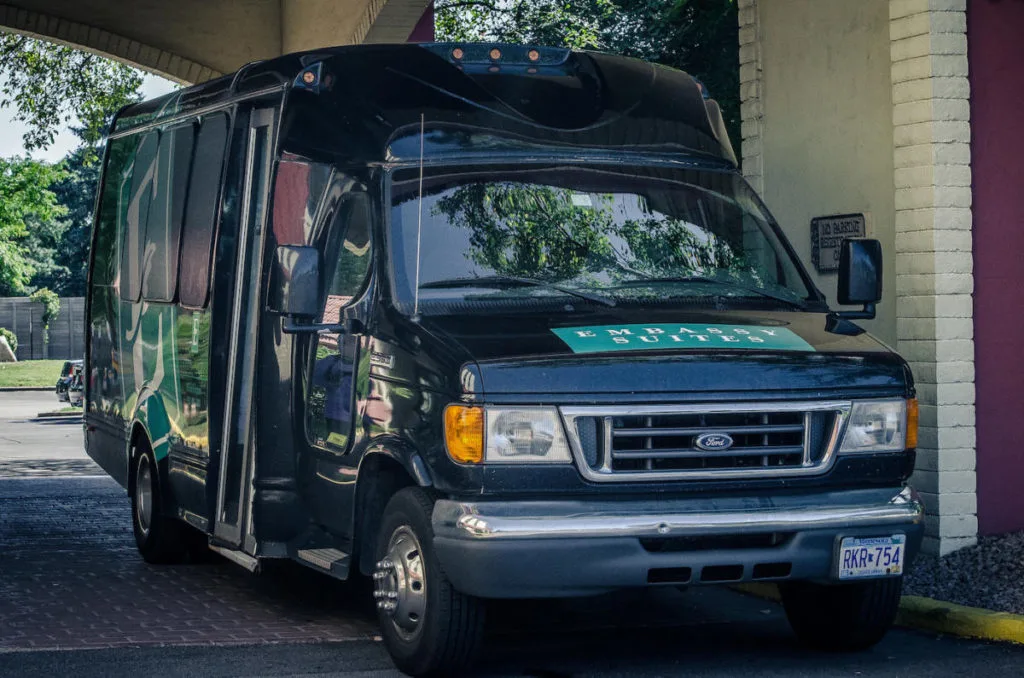
Shuttles come in a variety of shapes and sizes. Many of them are powered by cutaway versions of the most popular vans like Ford and Chevy vans. They can often provide much more cargo space than a van of a similar footprint. However, they require extensive demolition before you can convert. And the abundance of windows is generally a negative for camper conversions.
School Buses (Skoolies)
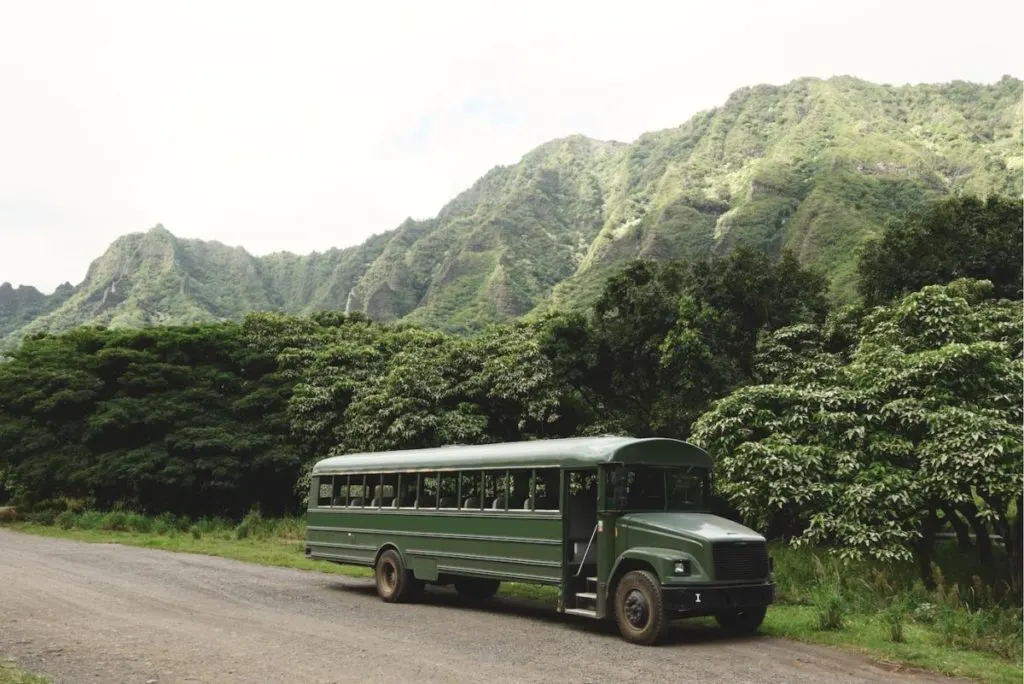
A school bus is another popular vehicle to live in. They come in many different sizes from full 40ft skoolies to compact short buses. The primary advantage of used school buses is a cheap purchase price and plenty of space for conversions. At about 7’7” wide buses are significantly wider than most vans (typically 5’10”-6’3”).
And while skoolies interior heights are usually either 6’2” or 6’6”, the severely curved roof means that standing height diminishes towards the edges of the bus. Which is why roof raises are still somewhat common.
Skoolies are completely surrounded by windows that are known to leak, so bus conversions should factor in the cost of window replacements or window deletes.
And while school buses are typically reliable vehicles, they usually require specialized mechanics to work on them.
Truck Campers
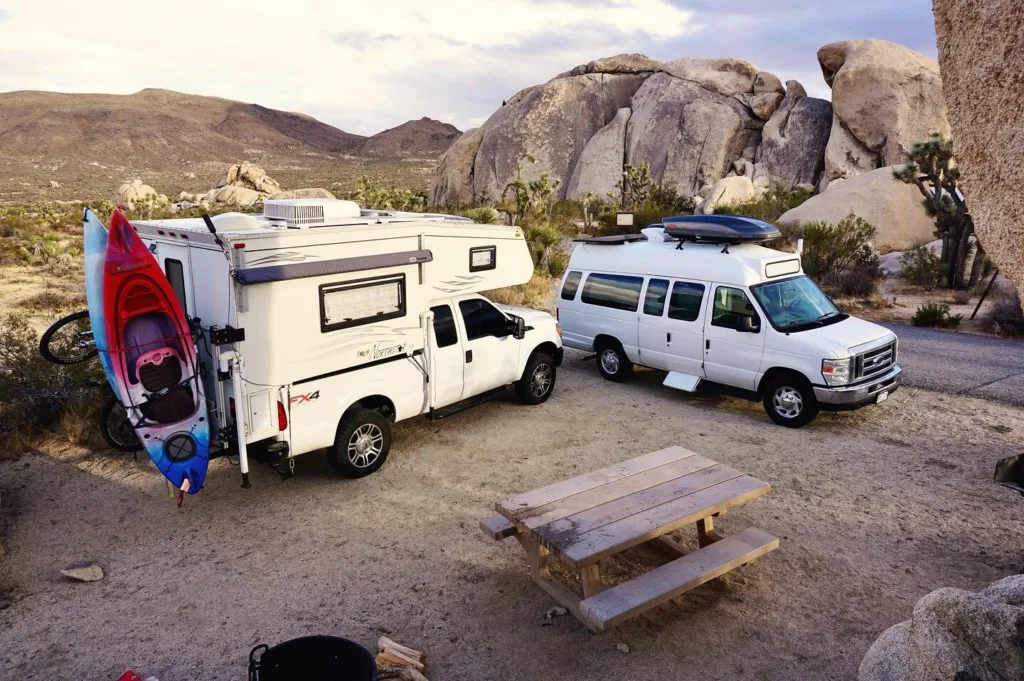
A Truck Camper is a hard-sided camper that is designed to slot right into a pick-up truck bed. They are a great option for serious overlanders that still want many of the comforts of an RV or campervan.
If you already own a truck capable of carrying a truck camper, then it may be your fastest way to get on the road.
And the ability to leave the camper behind gives you flexibility that no van can provide.
Takeaway: Best Vans To Live In
Choosing the right van for you is easier once you determine what your needs and goals are.
Are you designing a full-time campervan conversion for two people? Are you designing a micro-camper for one with good gas mileage that’s easy to drive in cities? Are you just looking for something cheap for a several month road trip? Are planning to do a DIY van conversion or pay for a professional van conversion?
Once you identify your needs you can find something that fits in your budget.
If you have a large budget, then the Mercedes Sprinter, Ford Transit, and RAM Promaster are great options with a great balance of space and capability.
Classic American work vans (like Ford E-series, Chevy Express, etc) are dependable workhorses that can be purchased at a good value. But without aftermarket modifications, they aren’t tall enough to stand.
City vans and minivans are a great choice for campervans that are easier to drive and cost less to maintain. For vanlifers who spend lots of time around cities, mini-vanlife is a perfect choice for fuel efficiency and ease of driving.
Here’s our guide on how and where to buy a van.
Happy Van Hunting!
Find your way over to our Vanlife Page with everything Vanlife gathered in one place.
Share ‘The Best Vans To Live In’ On Pinterest!
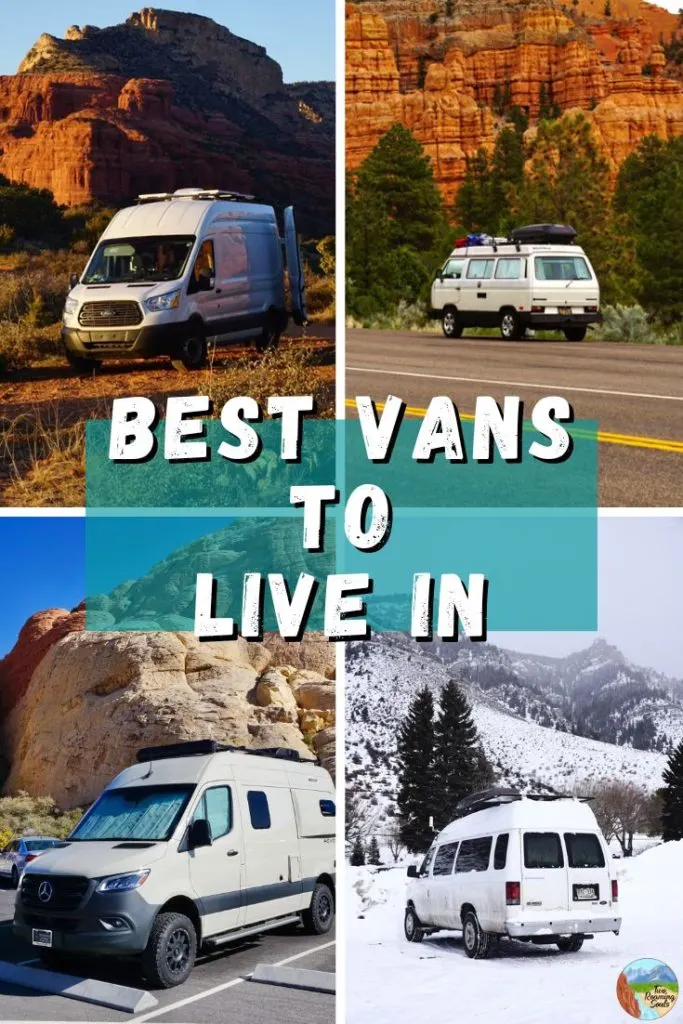
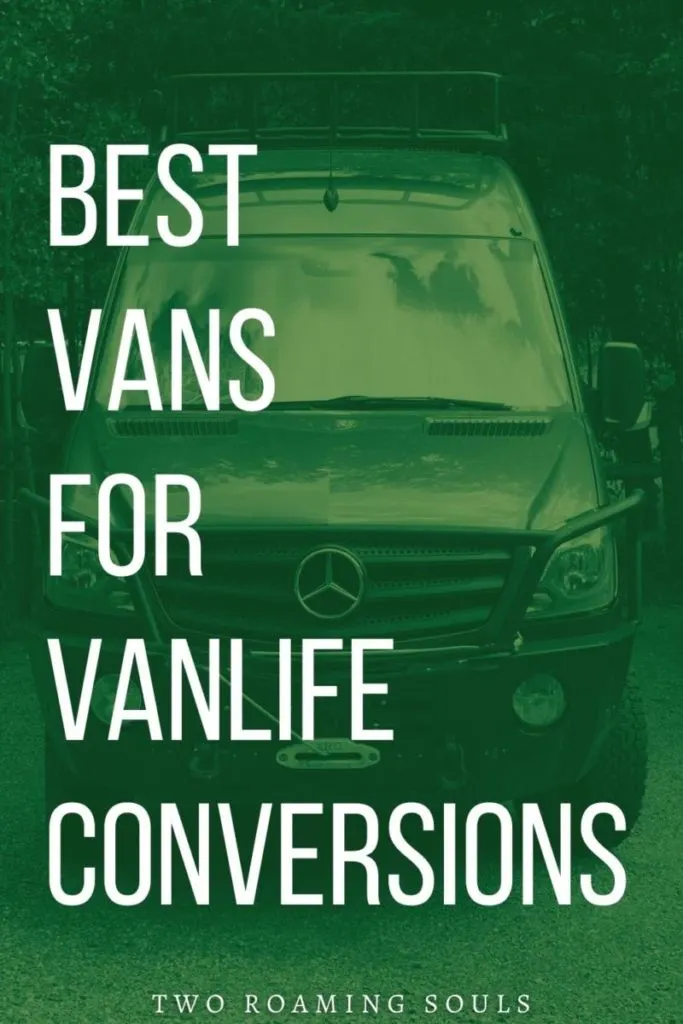

Best Vans To Live In For 2024: Top 5 Vehicles Most Recommended By Experts - Study Finds
Tuesday 3rd of October 2023
[…] The Nissan NV is a bit of a unique van option. While it may have been discontinued in 2021, you can still find plenty on the market to convert into your dream home on wheels. It feels like somewhat of a hybrid between euro-style van and classic American work van. With its available boxy high roof, paired with a truck-like construction. Perhaps the most notable feature is the best in class towing capacity of the Nissan NV,” shares Two Roaming Souls. […]
RV Blogs: Need to Read Websites for Happy Campers!
Thursday 27th of July 2023
[…] Best Vans to Live In and Convert for Vanlife […]